With wars in Iraq and Afghanistan, a new fighter on the assembly
line and ongoing sales of F-16s to NATO partners, 2006 was a
milestone year for military aviation. Here's how it looked,
month-to-month:

January
Nothing more than war leads to innovation. Just ask members of
the 939th Air Refueling Wing. Flying KC-135 tankers, they found the
venerable refueling airframe makes a good medical evacuation
platform... Ongoing concerns among US military
partners about the rising costs associated with the Joint Strike
Fighter program led to warnings in Canberra that Australia might
have to cut its order for 100 F-35s in
half. This, as we received word the USAF order for JSF
aircraft might be cut by as much as 20-percent.... The USS Ronald
Reagan, America's newest, most advanced aircraft carrier, departed
San Diego on its maiden voyage January 5th. It
immediately engaged in exercises aimed at honing the skills of both
the ship's crew and its complement of flyers in both conventional
and anti-terror warfighting tactics... The war in Iraq continued to
prove especially dangerous for flight crews on January 8th, when a
US Army UH-60 Black Hawk went down near
the town of Tall Afar. All four crew members and eight
passengers on board were killed... After that downing and two
others within a period of weeks, the Pentagon began
reassessing both the use of military helicopters in
that war-torn country and the possibility that insurgents had
switched tactics... Three months after Hurricane Katrina battered
the US Gulf Coast, Lakefront Airport near New Orleans suffered a
major setback. Because of ongoing issues related to damage from the
storm, the Army's First Battalion, 244th Aviation
Regiment pulled out, completing a move contemplated
even before the storm... In the middle of the month, Embraer and Lockheed-Martin parted
company on the Joint Aerial Sensor project after it
became apparent the ERJ 145 wouldn't be a sufficient platform for
all the heavy equipment the Army wanted to pack into the
airframe... It was a sight not seen in the skies over Europe since
World War II ended in 1945 -- a German-made Messershmitt
ME-262. The aircraft was one of five being restored.
It arrived in Manching, Germany, aboard a Cargolux Boeing 747 for
restoration and flight testing... And in a move reminiscent of the
Army's aviation program, the US Navy in January opened cockpits to enlisted
sailors, offering flight training and billets to
warrant officers.
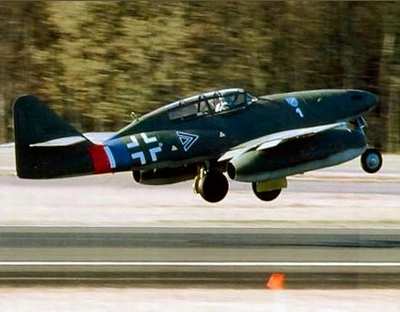
February
Leo Mustonen spent almost 64 years on California's Mount Mender
glacier. The 22-year old airman had been on a navigation training
flight in 1942 when the aircraft went down on the mountain. But in
October, 2005, hikers found the wreckage and
Mustonen's body frozen in the ice. His remains were returned
to his family in early February... Later in February, the
military's UAV program got a huge boost when the Pentagon awarded a military airworthiness
certificate to the Northrop Grumman Global Hawk. The
RQ-4A was also awarded an FAA certificate allowing it to fly
routine missions within the national airspace... Also in February,
the National Guard released staggering figures indicating just how
many people its aircraft and those from other services rescued in the aftermath of Hurricane
Katrina. The Army National Guard, for instance, used
helicopters to save a whopping 17,443 lives using just 133
helos.
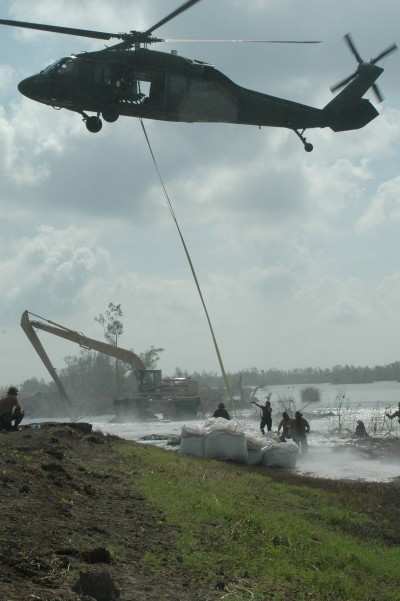
March
The Navy ordered an operational stand
down after nine serious incidents since October, the first such
stand down in nine years... Around the middle of March, the
military launched Operation Swarmer, the
biggest military air operation since the 2003 invasion of Iraq. The
goal: clear a hotbed of insurgents northeast of Samarra, about
60-miles from Baghdad... The first of 48 Lockheed-Martin F-16s purchased by the Polish Air
Force entered flight testing. The Polish aircraft are
among the most advanced in the NATO air fleet... But elsewhere in
NATO, controversy continued to swirl around the JSF program. Citing
a lack of operational control over the aircraft it had ordered, the
British Ministry of Defense threatened to
go elsewhere for its next-generation fighters.
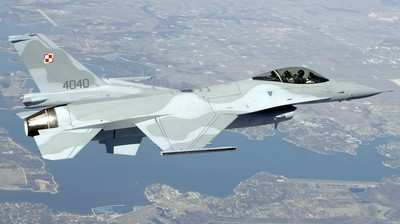
April
It doesn't happen very often, but when it does, it's big news.
One of the biggest transport planes in the US military's inventory,
a C-5, crashed on approach to
Dover Air Force Base in Delaware. All 17 on board the aircraft
emerged from the wreckage without life-threatening injuries, an
amazing statistic attributed by at least one veteran pilot to the
skill of the cockpit crew...
Another accident proved quite a scare for the Marine Corps, but by
April, everyone was breathing a little easier. A hard landing
at the USMC maintenance facility at New River, NC, raised questions
about the often-troubled V-22 Osprey program. But In April, Navy
Secretary Donald Winter expressed his strong and
continued support for the tilt-rotor program, saying
it's "an extremely capable platform..." It's not something you see
often in the middle of a war -- much less two. But Boeing in April
decided to lay off 25-percent of its Wichita
workforce. The manufacturer cited cutbacks in the
Navy's E4-B mobile command post program... Continuing a theme that
would plague Lockheed-Martin throughout the year, the Pentagon issued a new cost estimate for the
F-35 Joint Strike Fighter. The price tag for the
entire program was pegged in April at $276.5 billion, $20 billion
more than estimated in 2004... Also in April, TANGO TANGO, the second restored ME262
flying, made its first flight over Germany. No
problems were reported in the gear-down flight.
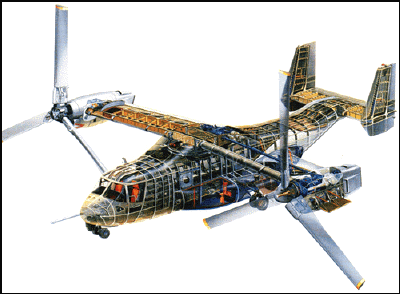
May
May marked the first flight of the Chinese
FC-4, seen by military analysts as a competitor to the
F-16 and the MiG-29. The first flight lasted about 16 minutes. No
problems were reported... As the competition to build a replacement
for the Boeing KC- 135 tanker heated up once again, one member of
Congress had some advice for
EADS, which is bidding against Boeing for the work: If
you want the tanker contract, give up government subsidies on new
Airbus planes... That didn't work so well. Later in the year,
Airbus announced it would build the revamped A350 XWB -- with help from several European
governments... Lockheed-Martin unveiled its "Super Galaxy" C-5 variant,
saying the new aircraft is cheaper to operate, more capable and
more dependable than older versions.
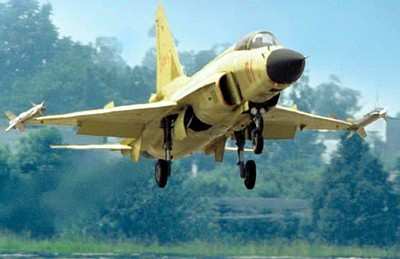
June
Remember that story about the layoffs at Boeing's Wichita
facilities -- job cuts caused by military downsizing in the midst
of two wars? You might not realize it, but the military itself is
in the middle of a preprogrammed downsizing. But hoping to reverse
a trend, the Air Force announced in June that it would give 192 lieutenants targeted for separation
another chance... Military aviation struck a huge blow
against al Qaeda in the war on terror. In an airstrike by USAF
F-16s, Osama bin Laden's leader in Iraq, Abu Musab al-Zarqawi was
killed when the house in which he was hiding was
flattened by precision weapons... Despite assertions that pilot
skill and calm nerves saved all 17 people aboard that C-5 that
crashed on approach to Dover AFB in Delaware, an Air Force
investigation into the mishap determined it was human error that caused the Galaxy to go
down. The board, convened at Scott Air Force Base in
Illinois, found that the pilots and flight engineer improperly
configured the aircraft for landing... Perhaps one of the biggest
military aviation stories of the year began to break in June, as North Korea prepared to launch a
long-range missile it claimed could carry a nuclear or
bio-chemical warhead to the western US... That prompted the
Pentagon to step up testing of its anti-missile systems. on June
22nd, the USS Shilo detected and destroyed a simulated
ballistic missile target, then moved into position
with other US forces to show the flag in the face of North Korea's
planned tests... Directly underneath the missile's flight
path, Japanese lawmakers began taking steps to protect their
country. Among them, they decided to allow US Patriot Missile batteries on
Japanese soil for the first time... The North Korean
test missiles, however, remained on the launch pad for weeks before
they were launched.

July
North Korea did eventually launch at least six missiles in early
July. But the internationally-feared Taepadong-2 missile, thought
capable of reaching the US, fizzled after just 42-seconds in
flight... Still, NORAD went on high alert and
governments around the world called for more sanctions against the
government of Kim Jung Il... Unsuccessful though it was, the North
Korean Taepadong-2 missile tests did, however, prompt European
nations to consider developing their own missile
shield... Stung by ongoing budget woes and controversy
about the amount of control US allies would have over their F-35s,
the US military named the Joint Strike Fighter the "Lightning II." The name is a
tribute to original Lightning -- also a Lockheed aircraft -- the
"fork-tailed devil" P-38... Many of the concerns about the
Lightning II came to a head in July, during the semi-annual
Farnborough Air Show in England. The Government Accountability
Office issued a report slamming the fighter
on several fronts. Lockheed-Martin found itself on the defensive,
despite claims that the GAO report, in essence, was misinformed...
Israel's invasion of Lebanon, on the hunt for soldiers taken
hostage by the terror group Hezbollah, saw its share of aviation
news. Two Israeli Apache helicopters
collided over the Israel-Lebanon border, causing
several deaths and injuries... The Israeli invasion of Lebanon was
news worldwide. But no facet of that war got more attention than
the air campaign. After Israeli F-16s bombed a UN facility and a refugee
camp, war commanders in Jerusalem declared a
moratorium on the air war. That lasted less than 48-hours.

August
Israeli air raids resumed after Hezbollah guerrillas launched missile attacks
across the border... But not all the bad publicity for the
Israeli Air Force was truly deserved. A Reuters photographer sent
to document damage caused by Israeli air raids into Lebanon was
sacked after his editors discovered his pictures had been significantly
altered after the fact... Later in August, Boeing made
a surprise announcement. A month ahead of schedule, the first
production version of the EA-18G "Growler" Airborne Electronic
Attack plane flew. It will eventually replace the
EA-6B "Prowler..." A month after North Korea tested several
missiles, including the long-range Taepodong-2, Iran test-fired its submarine-launched
long-range missile. The Tehran government claims the
weapon has radar-evading capabilities -- and that it hit its
target.
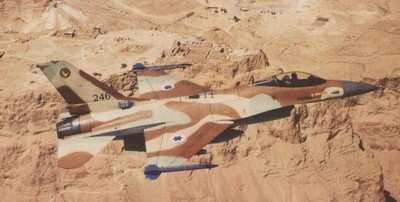
September
With an eye on both North Korea and Iran, the Pentagon once
again began tests aimed at improving the missile defense program.
In a September 1st test from Vandenburg AFB, an interceptor tasked
with merely tracking its target not only did that successfully, it brought the target down... But if that was
good news for the American military, the British suffered a
terrible blow with the loss of a Nimrod MR2 marine
reconnaissance aircraft over Afghanistan. All 14
people on board were killed when the plane went down. The British
Ministry of Defense denied Taliban claims that the aircraft had
been shot down by a shoulder-launched missile... Later came
word that the aircraft had suffered an in-flight fire during
refueling. Witnesses reported seeing a fire in the
rear of the aircraft as it careened toward the ground... Iran's
military continued to capture the world's attention in September
when it unveiled a homegrown fighter called the
"Saegheh" ("Lightning"). Looking very much like an
F-5, Iranian "experts" claimed the aircraft is much more powerful
because it was "designed, optimized and improved" by Iranian
engineers... How do you make a stand-off weapon even more
stand-offish? You strap on a wing kit of Australian
design. The kit, to be used with existing JDAM
inventory, can effectively triple the range of the weapon...
September also saw the end of an aviation era -- with the decommissioning of the F-14
Tomcat. About 3,000 people were on hand for the
ceremony. It was only slightly marred by the fact that the original
aircraft tapped to fly during the ceremony suffered mechanical
problems and had to be replaced. That's why they brought two to the
event.
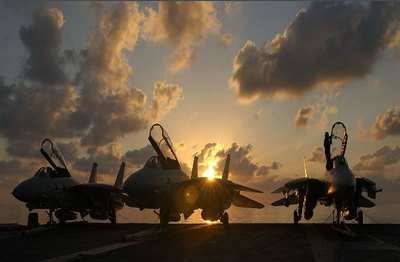
October
It was certainly no secret that Kim Jung-Il had another shoe to
drop after his missile tests of July. In September, he dropped it
-- in the form of a nuclear device exploded in an
underground test. The weapon was thought to be too
heavy to be carried as a payload aboard the Taepadong-2. But the
blast sent a renewed shiver up the spines of diplomats in Japan and
South Korea -- those in range of North Korea's more capable
missiles... With a short list of both manufacturers and aircraft in
hand, Air Force Secretary Michael Wynne predicted in October that
the military would have by summer a new tanker to
replace the aging USAF fleet of KC-135s. The list of aircraft had
been pared down to the Airbus A330 and Boeing 767 variants. But
Boeing also added a 777 variant to the list... October marked a
major milestone for the Air Force. As part of the branch's
year-long 60th anniversary celebration, President Bush dedicated the Air Force
Memorial. The memorial, adjacent to Arlington National
Cemetery, was 15-years in the making.
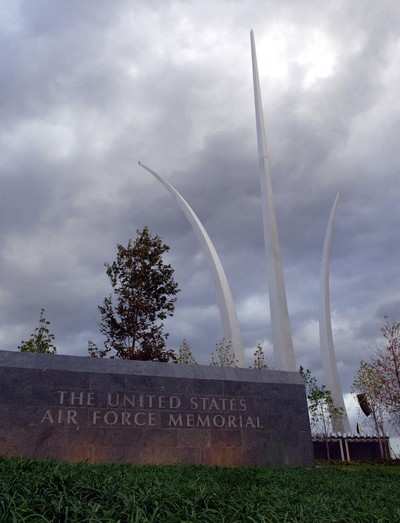
November
November marked the revelation of a secret long-held: The US
military had, for years, flown Soviet-made aircraft in combat
training exercises, giving American
air crews a chance to experience the most realistic air-to-air
fighting situations possible short of live-fire. The program, known
as "Constant PEG," was built in conjunction with Red Flag and Top
Gun to improve what had been widely acknowledged as a rather tepid
performance by US military pilots during the Vietnam War... With a
serious need for military aircraft overall -- especially in
Afghanistan -- Canada asked the US in November to be allowed "jump
the line" -- to take delivery on newly ordered aircraft
ahead of the US military. The move
looked likely. Canadian pilots were already being sent to the US
for training... In a year marked by several crashes, November saw
yet another. This time, it was a Russian-made Antonov AN-74 that crashed during its
take-off roll at Mehrabad Airport. At least 30 people
were killed. One apparently survived after the plane lost and
engine and veered into an obstacle at the edge of the runway.

December
It was a smack in the face of aviation contractors working with
the military coalition in Afghanistan. In its report on the crash
of a CASA 212 turboprop, the NTSB blamed lax Pentagon oversight in
contractor flights for the deaths of six people in
that crash... After years of anticipation and concerns among the
nine partner nations about its cost, the first production
Lockheed-Martin F-35 "Lightning II" made its inaugural
flight. The 40-minute test flight was conducted at
Lockheed's Fort Worth plant. It apparently went very well...
Remember that USN program to commission warrant officers as cockpit
crew members? Initiated earlier in the year, the program graduated its first non-commissioned
flight officers in December. Fourteen sailors
graduated from the first class.
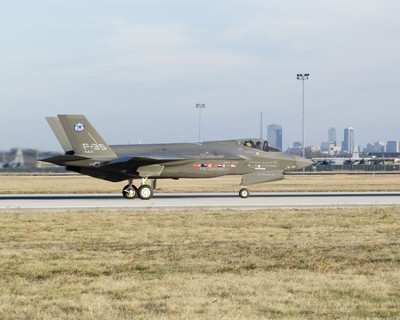
FMI: www.aero-news.net
 ANN's Daily Aero-Linx (05.06.25)
ANN's Daily Aero-Linx (05.06.25) ANN's Daily Aero-Term (05.06.25): Ultrahigh Frequency (UHF)
ANN's Daily Aero-Term (05.06.25): Ultrahigh Frequency (UHF) ANN FAQ: Q&A 101
ANN FAQ: Q&A 101 Classic Aero-TV: Virtual Reality Painting--PPG Leverages Technology for Training
Classic Aero-TV: Virtual Reality Painting--PPG Leverages Technology for Training Airborne 05.02.25: Joby Crewed Milestone, Diamond Club, Canadian Pilot Insurance
Airborne 05.02.25: Joby Crewed Milestone, Diamond Club, Canadian Pilot Insurance















